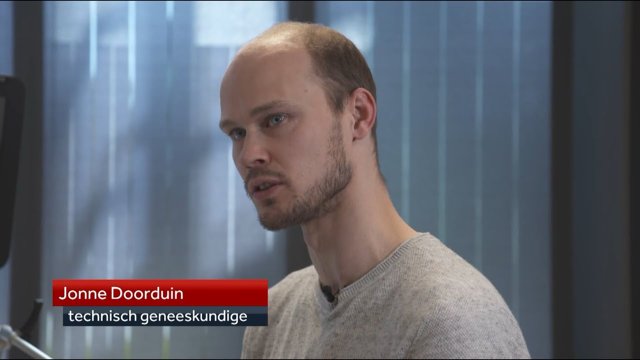‘Splitting the ventilator’, connecting two patients to one ventilation machine simultaneously, is an option in emergency situations during the COVID-19 crisis to cope with a shortage of this equipment, but only in an emergency and under very specific conditions. This is what researchers of the Technical Medical Centre of the University of Twente propose. They developed a design using existing medical equipment, and tested it on several types of ventilators, using a special double test lung. Together with experts from the Radboudumc (Nijmegen), Amsterdam UMC and Medisch Spectrum Twente (Enschede) hospitals, a protocol was set up for using this technique with utmost care. The Dutch Intensive Care Society has already published the first version of this protocol online. However, the test measurements and the risk analyses show that this solution is complex and not easily applicable to the majority of critically ill COVID-19 patients.
Using one machine for two patients at the same time is complex and only possible if there is a comparable and stable need for ventilation of the two patients during the phase of fully assisted ventilation. The complexity of the ventilation issues surrounding corona patients means that this emergency solution should be handled with great care as it requires a high degree of expertise. The researchers argue that patient-specific control of the ventilation is possible in a test set-up in the lab, but, given the current high-pressure situation in intensive care and the complexity of Corona patients, it is not yet realistic and safe in practice. As soon as one patient partially resumes breathing independently, split ventilation is no longer possible.
Separation
Existing ventilators can be used for two patients using relatively simple equipment. It is clear, however, that the patients must remain completely separated. The machine not only prepares the inflow of air, but it also captures and filters the outflow. Therefore, for two patients, two input and two output tubes are needed. The incoming and outgoing channel of the machine is split for this purpose, with valves and filters ensuring the separation. Since the machine cannot perform measurements for each patient separately, the researchers recommend installing sensors in both sets of tubes. This method has been tested for the three main brands of ventilators that account for 80 to 90 percent of the market in The Netherlands.
Test Lung
TechMed has performed various tests using the ‘Michigan test lung’. This is an advanced simulator with two lungs, where mechanical properties of the lungs can be modified, and on which various configurations of equipment, connecting parts and tubes can be tested. As the method has to be quickly and widely available in emergency situations, the design is based upon existing resources already in regular use in hospitals. Together with suppliers, the team selected devices that are currently available and then performed test measurements on the test lung. The results show that there can only be an extremely limited difference between the two patients to be able to ventilate properly. The research team also investigated solutions to increase this range by allowing more patient-specific settings to be adjusted. This line of research is possible in a lab setting, but it does not seem realistic to apply it in practice in the short term. Especially given the intense pressure under which medical professionals currently have to function. The results will be shared with the Dutch Intensive Care Society (NVIC) and the Dutch Society for Medical Physics (NVKF).
Multidisciplinary Team
The research team, led by Professor Ruud Verdaasdonk, Professor of Health Technology Implementation, consists of intensive care doctors, lung physiologists, engineers, clinical physicists and technical physicians of University of Twente’s Technical Medical Centre and the Radboudumc, Amsterdam UMC and Medisch Spectrum Twente hospitals. An important supporting contribution comes from Holland Innovative, advising on risk analysis and regulation for medical supplies.
Media publications
Source | Title | Date |
|---|---|---|
Tubantia | TechMed Twente helpt levens te redden met techniek voor dubbele beademing | 2020 / 03 / 29 |
NOS.nl | Twee IC-patiënten op één beademingsapparaat? 'Extreem terughoudend mee zijn' | 2020 / 03 / 27 |
Radio 1 | 2020 / 03 / 27 | |
BNR | 2020 / 03 / 27 | |
Volkskrant | Goedkoop, simpel beademingsapparaat moet piek op ic’s helpen verlichten | 2020 / 03 / 26 |
Nu.nl | Mogelijke oplossing voor overbelasting ic’s: beademingsmachines opsplitsen | 2020 / 03 / 26 |
UToday | 2020 / 03 / 25 | |
NoordHollandsdagblad.nl | 2020 / 03 / 25 | |
Trouw | Beademingsapparaten raken op maar deze uitvinding kan uitkomst bieden | 2020 / 03 / 24 |
Tubantia | TechMed Twente legt meerdere patiënten aan één beademingsapparaat om problemen te voorkomen | 2020 / 03 / 24 |
NOS NEWS ITEM
Downloads
The following document of the NVIC describes the principles and practice of ventilating two patients with one single intensive care ventilator.
The following documents are available for download: A description of the NVIC on the principle and practice of ventilating two patients with a single intensive care ventilator and the evaluation report 'splitting the ventilator'.
CONTACT
Do you have any questions about the test equipment:
For questions about the protocol, the user instruction and test results, please contact the NVIC:

